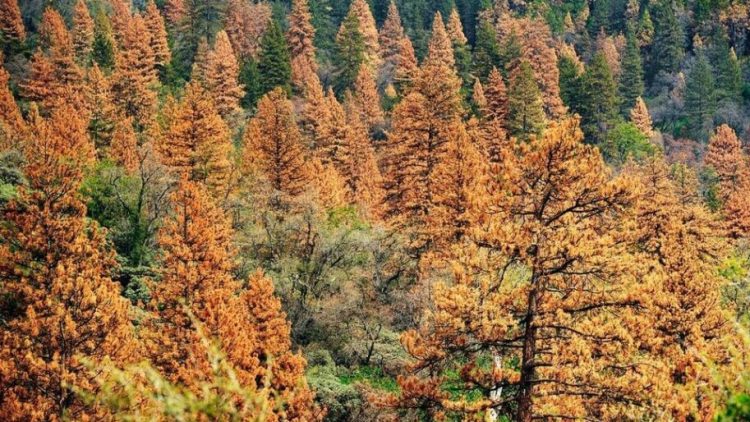August 4, 2023
Washington in a statewide drought advisory
 Late in July the Washington State Department of Ecology declared a drought emergency in 12 counties, including parts of Snohomish County and the two counties just east of King and Pierce, Kittitas and Yakima counties. The rest of the state is under drought advisory.
Late in July the Washington State Department of Ecology declared a drought emergency in 12 counties, including parts of Snohomish County and the two counties just east of King and Pierce, Kittitas and Yakima counties. The rest of the state is under drought advisory.
Drought is the absence of precipitation, rather than the presence of an event like a hurricane, tornado, or fire. People describe it as a “creeping phenomenon” because it slowly impacts many sectors of the economy and can last from just a few weeks or months to multiple years.
In Washington, drought is declared when there is less than 75% of normal water supply and there is the risk of undue hardship, such as limits on water users or the need for trucking in emergency drinking water for well users. Some people who draw from dwindling rivers and streams have temporarily lost their water rights.
For the second time in three years, unusually hot spring weather thawed the snowpack too early, leading to accelerated runoff of the water that feeds Washington rivers. The heatwave in May—one of the hottest in the past century—caused severely dry weather that exacerbated the issue by depriving soil of sufficient moisture.
In June, Washington received only 49% of its usual rainfall.
May and June ranked as the fourth warmest spring since 1895. State climatologists say that an El Niño weather pattern is all but certain for the next several months, indicating a high likelihood of continued warm, dry weather through October.
“Climate change is making warm, dry summers more frequent, and droughts more severe,” said Ria Berns, manager of Ecology’s Water Resources program. “What we’re seeing this year is likely a sign of things to come.”
Some farmers are making difficult choices and taking land out of production, sacrificing some crops to save others.
Among the many impacts of the drought conditions will be Washington’s fish, particularly salmon. Stream levels can drop to the point that fish are blocked from upstream migration. Moreover, stagnant water can become too warm for the fish to survive, while heat-loving bacteria kill off salmon in droves. Along parts of the Columbia River, the sturgeon fishing season was closed until mid-September following reports of unusually high numbers of dead sturgeon.
“We’re seeing things like fish passage challenges related to the low flow conditions. We’re seeing things like increased water temperatures that are stressing cold water fishes, both in the natural environment, but also within WDFW hatcheries,” said Megan Kernan, the drought coordinator for the Department of Fish and Wildlife.
Organizations like Washington Water Trust are working to mitigate these impacts using an approach called dry year leasing to reduce the amount of water used for irrigation and keep water instream for salmon.
Learn more
Observations and photographs of drought conditions can help the Department of Ecology assess whether to elevate state response. Observations should be submitted using the Conditions Monitoring Observation System.
How much runoff originates as snow?
The Pacific Northwest DEWS is a network of regional and national partners that share information and coordinate actions to help communities in the region cope with drought.
Seattle Public Utilities says based on current conditions, it anticipates having enough water for “people and fish” this summer. View the most up to date water supply conditions here.
Looking for water conservation tips? Check out Seattle Public Utilities’ Use Water Wisely program.
Support
Consider setting up monthly payroll deduction or making a one-time gift to any of the following local UWCFD member organizations working to reduce the impacts of climate change on Washington’s farms, fish and communities:
Washington Water Trust (charity code 0523588) restores water to Washington’s rivers and streams for salmon and the other creatures and communities that depend on abundant cool, clean, flowing freshwater.
EarthShare Washington (charity code 0316709) funds more than 60 leading organizations that provide for livable communities and a healthy planet. Together, we are ensuring a cleaner, greener future. Includes the National Forest Foundation.
Join Conservation Northwest in connecting habitat, protecting wildlands, and restoring wildlife (charity code 0320835).
Friends Of The Earth (charity code 0314972) promotes clean and sustainable energy, clean transportation, climate justice for poor and vulnerable populations, responsible use of technology and protection of the earth.
Hood Canal Salmon Enhancement Group (charity code 1479880) strives to deepen the connection between land, people, and salmon through research, restoration, and education. Our mission is to ensure that wild salmon are once again abundant in the Pacific Northwest.
Forterra (charity code 0456443) works for healthy ecosystems and resilient communities across Washington.